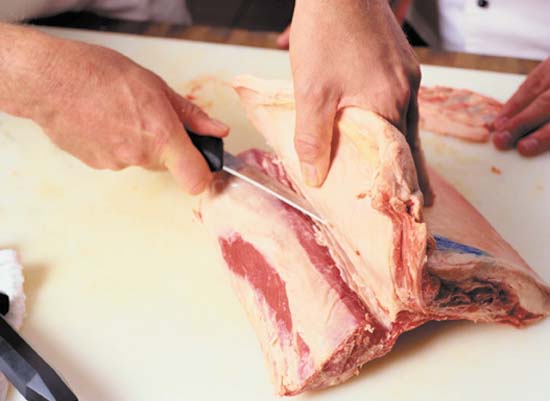The meat-processing industry comprises businesses that specialize in slaughtering various animal species, such as cattle, hogs, sheep, lambs, or calves. This is to obtain meat that can be sold or used for a variety of reasons on the same premises. Slaughtering animals, cutting the meat, inspecting it for safety, packing it, processing it into various items like sausage or lunch meats, distributing it to retailers, and selling it to customers are all part of the meat processing industry.
Control systems are used to automatically manage the conditions under which a product is manufactured, resulting in higher quality and efficiency. By implementing better control systems, meat processing industries can benefit from a more efficient production process, better product quality, higher output, and many others.
Advantages of Control Systems
Automated Processes
The cornerstones of today’s smart meat production are advanced automation solutions. Many types of meat and logistics companies have pioneered new technologies and control systems, such as automated production and packing lines, semi-automated picking systems, a robot depalletizer, sorters, and high-bay storage facilities for pallets or single cartons.
Even in the best of circumstances, human beings are prone to making mistakes. Fatigue and time constraints might increase the likelihood of errors and oversights in the actual world. That’s why, when it comes to meat processing, relying on manual monitoring systems is a bad idea (e.g., having someone check the thermometer every hour or so). When you automate your temperature monitoring systems, you can be sure that everything will happen on time and with less likelihood of error—and no chance of human error.
Furthermore, automation can help reduce the time spent doing manual checks, allowing your team to focus on other important tasks. Finally, a system that automatically records temperature and humidity and wirelessly transfers data to the cloud ensures that data is easy to retrieve (and all in one location) when it comes time for an audit.
In short, automation helps you to remove redundancies and needless manual checks, decreasing human error, and inefficiency, as well as time-consuming, superfluous tasks that might slow down your plant’s throughput.
Continuous surveillance
Temperatures in cold holding units may climb over 41 degrees due to power outages or other technical issues, posing risk to food items. If no solution is in place to detect and inform you when temperatures go outside of permitted norms, the problem may go undiscovered.
The only surefire way to assist prevent these difficulties is to use a 24/7/365 automated monitoring system with appropriate alerting. By collecting data that the repair team may utilize to assess performance trends, round-the-clock monitoring helps to prevent equipment breakdown.
Precise and powerful
Process control systems are far more precise and powerful than systems that are only operated by humans. Essentially, process control is all about eliminating human feedback and letting an industrial plant’s advanced, automated technologies handle minor modifications automatically, with no human participation beyond system monitoring.
Improve your capability to take on extra work
Process control not only improves system throughput but also allows your plant or firm to take on more work. As you continue to automate process control, more personnel and systems will be freed up to focus on other projects and products, increasing profitability.
Hygiene
Hygiene is crucial in meat processing. Control systems, from slaughter to meat processing to packaging, are meticulous when it comes to preventing contamination. DGS offers pneumatic and electric automation solutions that are perfect for processing meat and sausages, built using a hygienic design, extremely resistant to external influences, and easy to clean.
